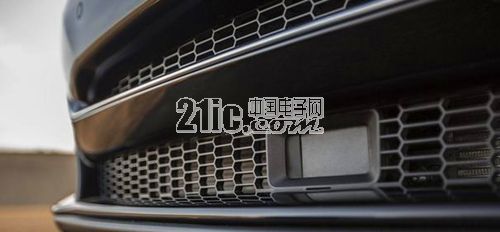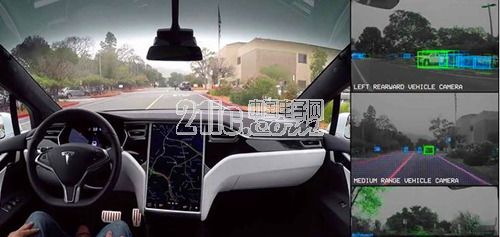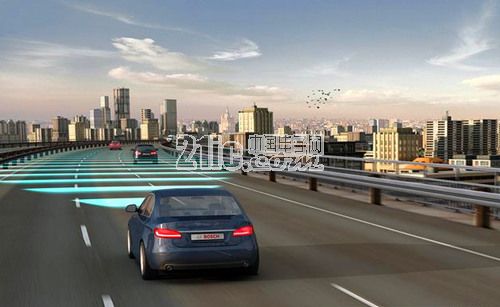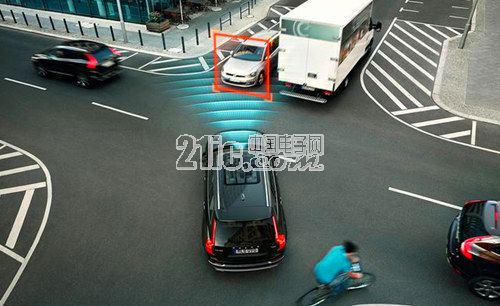I remember that I introduced Lidar to you some time ago. The “family barrel†on the roof of the car has been blown into the core technology of the era of autonomous driving. Let's take a look at the related content with the car electronics editor.
Lidar is of course very good, high precision, wide range, 360° detection, free from clutter interference, able to scan the 3D environment model around the car, and with the global map obtained in real time, the accuracy of navigation and positioning can be greatly improved. And not affected by the light, the big night encounters more arrogant high-light dogs are not afraid. It seems that with lidar, autopilot is a matter of minutes.

Compared to laser radar, millimeter wave radar or the "new darling" into autonomous driving?
But nothing is perfect. Lidar is easily affected by bad weather, and it will be embarrassing when it encounters rain, snow and fog. The most important thing is that it is expensive! The early mechanical laser radar would cost tens of thousands of dollars, and even with the new solid-state laser radar, thousands of dollars could not run. The most powerful laser radar companies, including Velodyne and Quanegy, are still looking for ways to reduce costs. Therefore, the "eyes" of autonomous driving cannot be only laser radar, but also need other equipment assistance.

Compared to laser radar, millimeter wave radar or the "new darling" into autonomous driving?
Another popular option is the millimeter-wave radar, which is used by Tesla. In the hardware of Autopilot 2.0, in addition to 8 cameras and 12 ultrasonic sensors, there is a millimeter-wave radar for forward detection. In fact, this technology is now widely used in automobiles, and even appeared in some high-end cars as early as the last century. For example, many people buy a car and like the ACC adaptive cruise. The black probe at the front is the millimeter wave radar. And some of the high-end models equipped with blind spot monitoring, lane change assistance, automatic emergency braking and other functions, are achieved by means of millimeter wave radar.

Compared to laser radar, millimeter wave radar or the "new darling" into autonomous driving?
But don't make a mistake, this millimeter wave radar is a different matter from the general reversing radar. The reversing radar is a transmitting mechanical wave, and the millimeter wave radar is emitting electromagnetic waves. But the principle is similar, the electromagnetic wave is sent out, and then the echo is received, and the position data of the target is measured according to the time difference between the transmission and reception. The frequency band of the millimeter wave is special, the frequency is higher than the radio, lower than the visible light and the infrared light, and the frequency is roughly in the range of 10 GHz to 200 GHz. At present, the most mainstream frequency bands are 24 GHz and 77 GHz. The 24 GHz detection range is short, which is often used for blind spot monitoring. The adaptive cruise is generally used at 77 GHz because the wavelength is shorter, the detection distance is longer, the resolution is higher, and the interference is anti-jamming. More capable. Most autopilot solutions now use the 77 GHz millimeter wave radar.
Compared to laser radar, the detection range of millimeter-wave radar can easily exceed 200 meters, while the lidar is generally less than 150 meters. In high-speed driving scenes, of course, millimeter-wave radar is more suitable. Moreover, the millimeter wave radar has a stronger ability to penetrate the rain and fog, and is not afraid of encountering smog and failing. The most important thing is that it's cheaper! It's cheaper than starting a laser radar with tens of thousands of dollars, millimeter wave radar for one or two hundred dollars, and cheaper than the camera. The disadvantage is that the accuracy is not as good as that of the laser radar. It can only detect an obstacle in front and know the distance, speed and orientation of the obstacle, but I don't know what shape it is.

Compared to laser radar, millimeter wave radar or the "new darling" into autonomous driving?
Of course, the technology of millimeter wave radar is still in progress. In recent years, many companies are developing the latest 79GHz millimeter wave radar. With imaging technology, the 79 GHz radar can acquire images of the measured object, and make up for the shortcomings of the existing millimeter wave radar technology in detecting accuracy. Because the technology of 77GHz radar is mainly in the hands of large enterprises such as the mainland, Bosch and Delphi, Chinese technology companies are most interested in the 79GHz radar and want to overtake.

Compared to laser radar, millimeter wave radar or the "new darling" into autonomous driving?
Camera? Lidar? Millimeter wave radar? This is actually not a multiple choice question. The best solution is to combine these technologies. Lidar is highly accurate and can detect the shape of obstacles, but it doesn't know what it is, all of which require a camera. The camera is the most intuitive, but it is very affected by the lighting environment, a high beam is paralyzed, and it will be blocked by the line of sight, and the 3D stereo environment model is not available. Millimeter wave radar is not high-precision, but it is low in cost and can be online 24 hours a day, regardless of the weather. How can you rely on a pair of eyes to drive such a difficult task, of course, the more the better.
The above is about car electronics - compared to laser radar, millimeter wave radar or into the "new darling" of autonomous driving? For related introductions, if you want to know more information, please pay more attention, electronic engineering will provide you with more complete, more detailed and updated information.
A separate slip ring is a device that allows two or more rotating electrical shafts to be connected without having to pass the electricity through the shafts' bearings. This is often used in situations where there is a need to power something externally while the shaft is still turning. For example, a machine might have a drive shaft that powers it while also having a separate output shaft that needs to turn at a different speed. By using a separate slip ring, these two shafts can be powered without any interference.
Slip Ring Shaf is a key component of a slip ring. It is the shaft on which the rotary electrical contacts are mounted. The shafts must be strong enough to support the weight of the contacts and must be able to turn freely. There are many factors to consider when selecting a shaft material, including strength, corrosion resistance, and operating temperature.
Oubaibo is a professional separate slip ring manufacturer located in China. They offer a wide range of slip ring shaft made from different materials, including carbon steel, stainless steel, and brass. Their products are made to meet the highest quality standards and are backed by a 100% satisfaction guarantee.
Separate Slip Ring,Slip Ring Shaft,Slip Ring 4 Wire,Slip Ring For Motor
Dongguan Oubaibo Technology Co., Ltd. , https://www.sliprobs.com